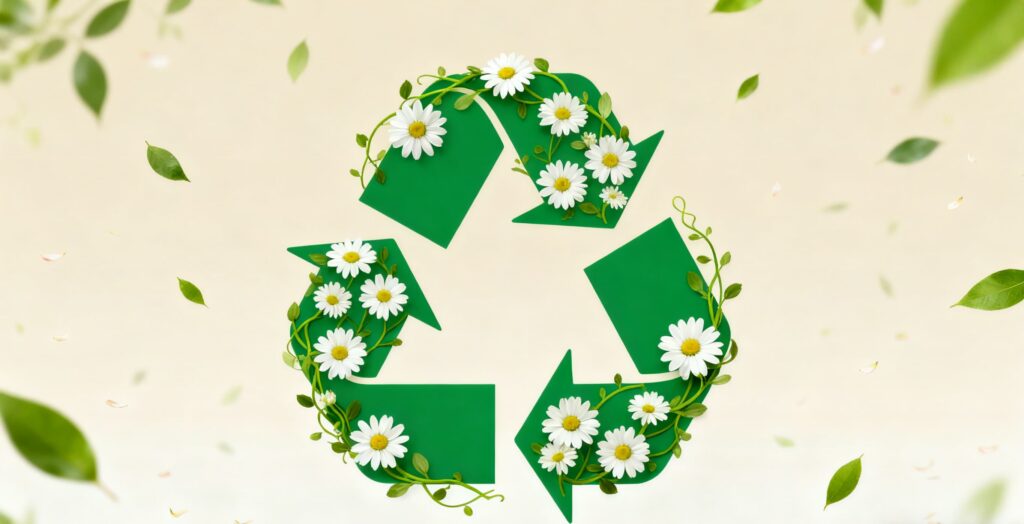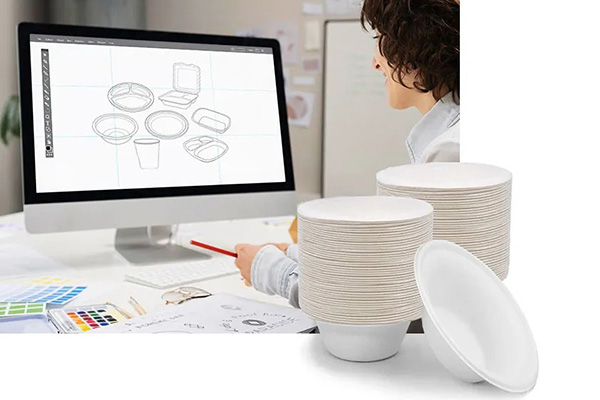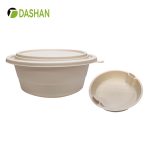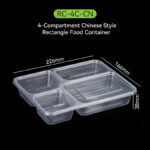Quick Summary
This article explores the distinctions between biodegradable and compostable materials, examining their definitions, breakdown processes, environmental impacts, and practical applications. It highlights how certifications, proper disposal, and informed product choices are key to maximizing environmental benefits. By understanding these differences, consumers and businesses can make responsible choices that reduce waste and support sustainability.
Introduction

In the realm of eco-friendly products and sustainable living, the terms biodegradable and compostable are often used interchangeably—but they are not identical. Understanding the nuances between these materials is essential for effective waste management, environmental protection, and informed purchasing decisions. This article provides an in-depth exploration of biodegradable and compostable materials, their environmental roles, practical uses, and guidance for choosing certified, reliable products, including examples from companies like DASHAN.
Understanding Biodegradable Materials
Definition:
Biodegradable materials naturally break down into simpler components such as water, carbon dioxide, and biomass, aided by microorganisms like bacteria and fungi.
Breakdown Time:
Varies widely—from weeks to years—depending on material composition and environmental conditions.
Residue:
Some biodegradable materials may leave non-toxic residues, while others, particularly certain plastics, could leave microplastics.
Examples:
-
Natural materials: Paper, cotton, wood.
-
Some synthetic materials: Biodegradable plastics (may require specific conditions).
Pros:
-
Reduces landfill accumulation.
-
Potential alternative to conventional plastics.
Cons:
-
Can take a long time to decompose fully.
-
Certain biodegradable plastics require industrial processing.
Understanding Compostable Materials
Definition:
Compostable materials decompose under controlled composting conditions, creating nutrient-rich compost that can improve soil quality.
Breakdown Time:
Typically 90–180 days in industrial composting facilities.
Residue:
Compostable items leave no toxic residue and contribute beneficial organic matter.
Examples:
-
Organic waste: Food scraps, garden trimmings.
-
Certified compostable products: Bioplastics, packaging, tableware.
Types of Composting:
-
Home composting: Limited heat and moisture; slower decomposition.
-
Industrial composting: High heat, controlled moisture, and oxygen for faster breakdown.
Pros:
-
Produces nutrient-rich compost.
-
Safe for soil and environment.
Cons:
-
Requires specific conditions.
-
Not all products can compost effectively at home.
Biodegradable vs. Compostable: Key Differences
| Aspect | Biodegradable | Compostable |
|---|---|---|
| Definition | Breaks down into natural substances | Breaks down into nutrient-rich compost |
| Residues | May leave harmful residues | Leaves no toxic residues |
| Timeframe | Weeks to years | 90–180 days |
| Requirements | Decomposes naturally, slowly | Requires controlled composting environment |
| Examples | Paper, wood, biodegradable plastics | Food scraps, certified compostable plastics |
Practical Considerations for Consumers and Businesses
Certification and Labels:
-
Biodegradable: Often lacks strict certifications; check manufacturer details.
-
Compostable: Look for certifications like BPI, OK Compost, or EN 13432.
Environmental Impact:
-
Compostable materials generally have a more positive impact because they enrich the soil and leave no harmful residues.
-
Biodegradable materials are useful where decomposition in natural settings is expected but may be slower and less predictable.
Disposal Guidelines:
-
Biodegradable: Can decompose in soil or landfill depending on material.
-
Compostable: Best sent to industrial composting facilities for optimal breakdown.
Use Cases:
-
Biodegradable: Suitable for general-purpose items like paper cups, plant-based plastics.
-
Compostable: Ideal for food packaging, utensils, and organic waste management.
DASHAN’s Role in Sustainability

DASHAN produces high-quality biodegradable and compostable products that meet international environmental standards. Their offerings include:
-
Biodegradable Tableware: Plant-based plates, bowls, and utensils.
-
Compostable Packaging: Food containers, trays, and flexible packaging solutions.
-
Custom Solutions: Tailored biodegradable and compostable materials for businesses.
By choosing DASHAN-certified products, consumers and companies ensure their eco-friendly choices truly contribute to a healthier planet.
FAQ
-
What is the difference between biodegradable and compostable?
Biodegradable materials break down naturally over time; compostable materials require controlled conditions and leave no toxic residue. -
Are all compostable products biodegradable?
Yes, but not all biodegradable products are compostable, as some may leave residues or microplastics. -
Can biodegradable products go in a compost bin?
Not always; only items labeled compostable are suitable for compost bins. -
How long do biodegradable vs. compostable materials take to break down?
Compostable: 90–180 days under proper conditions; biodegradable: varies from weeks to years. -
Do biodegradable and compostable products mean eco-friendly?
They usually reduce environmental impact, but true eco-friendliness depends on production, disposal, and complete degradation. -
Can compostable products be thrown in the trash?
No; they need oxygen, moisture, and microbial activity. Landfills may prevent proper decomposition. -
How to identify certified compostable vs. biodegradable products?
Look for logos like BPI Certified, OK Compost, or EN 13432 for compostable items. Biodegradable labels are less standardized.
Conclusion
While biodegradable and compostable materials share the goal of reducing environmental impact, their differences are significant. Biodegradable items break down naturally over time, sometimes leaving residues, whereas compostable items require specific conditions but produce nutrient-rich compost. Awareness, proper disposal, and reliance on certified products are essential steps toward reducing waste and supporting sustainable practices. Companies like DASHAN demonstrate how reliable, eco-friendly products can be both functional and environmentally responsible.
📚 References
-
Oceanwatch Australia. (2019). Compostable vs Biodegradable. Retrieved from https://www.oceanwatch.org.au/uncategorized/compostable-vs-biodegradable/
-
Green Business Benchmark. (2024). Biodegradable vs. Compostable: Understanding the Key Differences. Retrieved from https://www.greenbusinessbenchmark.com/archive/biodegradable-vs-compostable
-
Beyond Plastics. (2025). Demystifying ‘Compostable’ and ‘Biodegradable’ Plastics. Retrieved from https://www.beyondplastics.org/fact-sheets/bad-news-about-bioplastics
-
Ellen MacArthur Foundation. (2023). Compostable, Biodegradable, and Bio-based Plastic: What’s the Difference?. Retrieved from https://www.ellenmacarthurfoundation.org/compostable-biodegradable-and-bio-based-plastic-whats-the-difference
-
Good Start Packaging. (2024). Biodegradable vs Compostable: What is the Difference?. Retrieved from https://www.goodstartpackaging.com/biodegradable-vs-compostable-what-is-the-difference
-
Green Hive. (2023). Biodegradable vs Compostable: Understanding the Differences. Retrieved from https://www.greenhive.io/blog/biodegradable-vs-compostable
-
Waste Not Compost. (2023). The Difference Between Biodegradable and Compostable. Retrieved from https://www.wastenotcompost.com/blogs/biodegradable-or-compostable
-
BPI World. (2024). Biodegradable vs Compostable. Retrieved from https://bpiworld.org/biodegradable-vs-compostable
-
Diversitech Global. (2023). Biodegradable vs Compostable Materials: What’s The Difference?. Retrieved from https://www.diversitech-global.com/post/biodegradable-vs-compostable
Disclaimer & Copyright Notice
This article is created by the Dashan Packing editorial and research team.
All information presented here is for educational and industry reference purposes only.
Some data and standards cited in this article are sourced from publicly available materials,
official regulatory documents, or third-party publications, which are properly credited where applicable.
All rights to third-party trademarks, images, and content belong to their respective owners.
If any copyrighted material has been used inadvertently, please contact us at angel@chndashan.com.
We respect intellectual property rights and will promptly remove or revise any material upon verification.





